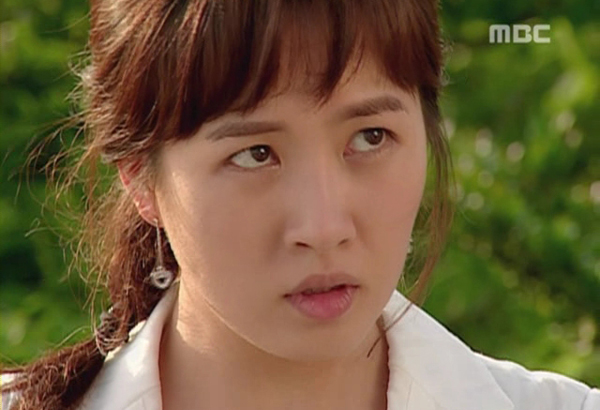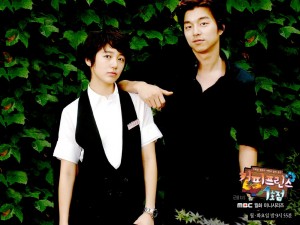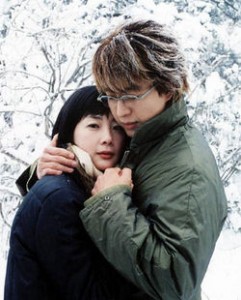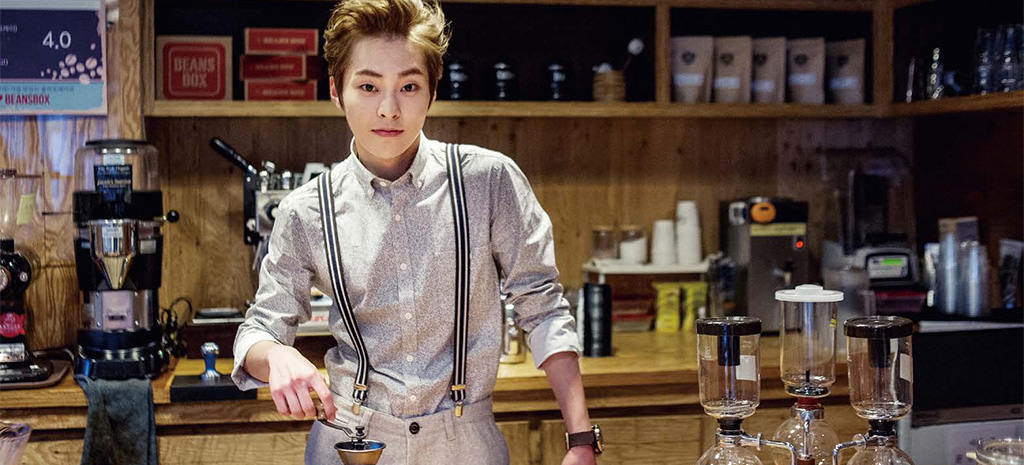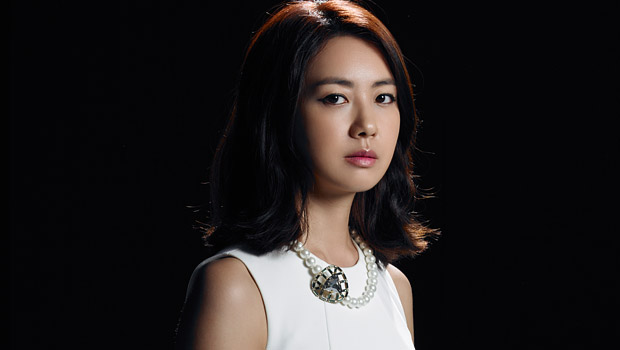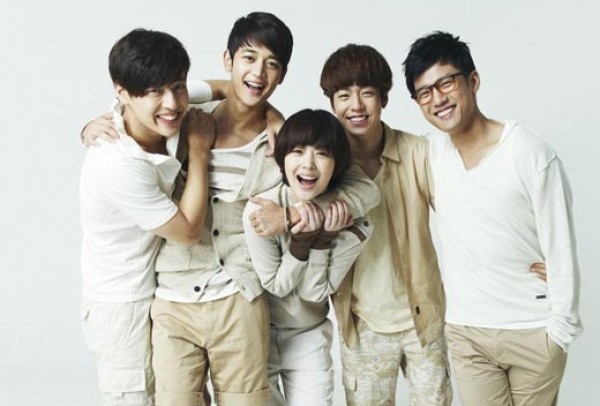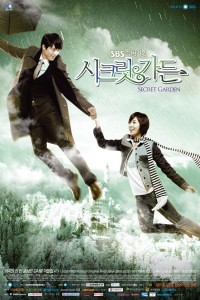 Secret Garden is one of the most popular dramas from the last years, so I decided to watch it myself. But, what I found frustrated and disappointed me at the same time. During the 20 episodes, the male protagonist Joo-won insults, scorns and looks down on Ra-im for belonging to a lower class, and yet she just tolerates it and is still there waiting for him when at the end of the series he decides he actually loves her. It is also so in dramas such as You’re beautiful, Boys Before Flowers and Beethoven Virus, in which the female character is torn between the guy that disdains her or the nice guy who takes care of her. In these three cases the girl ends up choosing the ‘bad guy’; such a storyline is not inherent to Korean dramas but it is, however, more recurrent. And I find myself struggling with a female protagonist that appears to be passive and subordinated to the male character.
Secret Garden is one of the most popular dramas from the last years, so I decided to watch it myself. But, what I found frustrated and disappointed me at the same time. During the 20 episodes, the male protagonist Joo-won insults, scorns and looks down on Ra-im for belonging to a lower class, and yet she just tolerates it and is still there waiting for him when at the end of the series he decides he actually loves her. It is also so in dramas such as You’re beautiful, Boys Before Flowers and Beethoven Virus, in which the female character is torn between the guy that disdains her or the nice guy who takes care of her. In these three cases the girl ends up choosing the ‘bad guy’; such a storyline is not inherent to Korean dramas but it is, however, more recurrent. And I find myself struggling with a female protagonist that appears to be passive and subordinated to the male character.
Korean dramas have been exported to South-Eastern Asian countries for years, and over the last years a variety of researches have explored the question of their success. During 2005, Avid Lin conducted an audience study of female Korean drama fans in Hong Kong and Singapore. In this study, most of the informants pointed out that their interest in Korean dramas was how they “preserve what the informants called traditional (‘Asian’) values while packing them with attractive modern and trendy aesthetics”. For example, some of the descriptions these viewers made of the female characters were “soft”, “tender”, “delicate and touching”, “faithful to love”, “willing to sacrifice” and always putting love and their male partners as their first priority.
During a study of educated, Chinese, heterosexual men’s consumption of Korean TV dramas in Hong Kong, the informants discussed about the female characters in these dramas and their relationship with their ideal women. One of the informants said this about female characters in Korean dramas: “The girls are very pure, very faithful to love, and willing to sacrifice . . . (I) have been waiting for this kind of girl, and now such a pure girl really appears!” and other describes them as “…, ’tolerant’ and ‘perseverant’; ‘much better than Hong Kong women’”. It is indeed usual in Korean dramas to see female characters forget their personal aspirations prioritizing their relationship with the male protagonist. This is usually portrayed as a positive quality, because she is sacrificing herself for love, which is the ultimate aim in romantic dramas after all. These values, as identified by the informants themselves, are the heritage of Confucianism.
Among the East Asian countries, Korea is at present the one with the strictest adherence to the Confucian ethical tradition; this fact has a direct relationship with gender roles in Korean society and therefore influences the image of women in media. Confucianism addresses the gender role topic based on two concepts: Namnyo-yubol (difference between sexes) and Nae-Oe-Beob (woman as representative of the domestic sphere and men of the public sphere). According to traditional Confucianism, women’s social role is subordinated to the men in her life: the father, the husband and the son. The Joseon Dynasty, who ruled Korea from 1392 to 1897 under the Confucian precepts, is considered as one of the most restricting societies towards women’s role in society. The legacy of the Joseon Dynasty still remains in the Korean society; it is considered as one of the most important periods in the development of Korea as a nation.
One of the values that Korean dramas have inherited from Confucianism is the importance of the family. It is not unusual in Korean dramas to see for example the protagonists living with their families at any age. For example, Kim Sam-soon in My name is Kim Sam-soon and Ae-jung in The Greatest Love both live with their families despite being thirty and having a job. These aren’t only anecdotic facts; in both cases the family members play important roles for the development of the story.
In an article that compared the depiction of the family that can be found in recent Korean, Japanese, Chinese and Taiwanese TV dramas, they note that the family presence is most prominent in the Korean dramas compared to the others. The figure of the mother is usually a recurrent role in Korean dramas. The woman, as a figure behind the males in her family, plays an important part, but always in the domestic context, and the power of the mother within the family is tremendous, but this doesn’t reflect in her role in the society outside the domestic sphere. It is usual in Korean dramas to find the mother as the only representative of the family; the figure of the father is often absent when the problems to deal are related to marriage and other domestic issues. However, once there’s a subplot involving business or politics, it is more than probable that a paternal figure appears; in Protect the Boss for example, it is actually the figure of the mother that is missing, and the father plays a relevant role in the business-related subplot.
Women in the Korean society are, therefore, supposed to marry and establish their new family; marriage is definitely a big social pressure in Korea. Once a female hits her thirties, she is susceptible to be called ‘ajumma’. Ajumma means, literally, married woman, but it is used by extension to designate all women who look old enough to be married. Contrary to the masculine equivalent ‘ajusshi’ (which, on a note, doesn’t mean “married man”), ajumma has some bad connotations; ajummas are those loud housewives with perm hair and chubby cheeks. Going back to My name is Kim Sam-soon, the main female character is already thirty and constantly reminded that, for a single woman, thirty is old. When the male protagonist calls her ‘ajumma’ in their first meeting, she gets offended and retorts she should be called ‘agassi’ (the equivalent for younger women), to which he replies “Aren’t all the women over thirty ajummas?”.
But while watching Korean dramas may give you the feeling that once you reach your thirties you are considered old by the Korean standards, it wouldn’t be fair to say that this is the norm. According to the Korea National Statistical Office, the average age of first marriage is 31.6 for men and 28.7 for women, which is around the same as most developed countries, meaning that actually most of the Korean women remain unmarried until their late twenties.
However, it is also these “older” female characters that usually are more interesting, less passive and less fitting to the Confucian stereotype. It wouldn’t be accurate to say that these strong feminine characters are rare in Korean dramas, but they usually appear associated with an image of unfeminity or selfishness. In Coffee Prince the protagonist Eun-chan is often mistaken for a guy. She has short hair, wears baggy clothes, does taekwondo and is blunt. She represents exactly the opposite of what a good Asian woman should be. These characters don’t necessarily look masculine, but they poses characteristics traditionally associated with men: they are usually violent and use physical aggression as self-defense, are assertive and are blunt. In the study about Chinese male viewers, they openly show their discomfort towards this “unfeminity.” While describing the so-called ‘strong women’ in modern day Hong Kong, one of the informants argues “nowadays all of them are ambitious, desire to advance, and are self-reliant, becoming much stronger than before… I wonder if they have lost other feminine virtues like tenderness, obedience and submissiveness.” Another informant even points this kind of women as “try to be men”. So for viewers who take pleasure in the Asian values that Korean TV dramas represent, this unfeminity is an undesirable trait in female characters.
However, there seems to be a change in the depiction of the female characters in the last years, or at least in the reaction of the viewers to these characters. Winter Sonata (2002) represents the trend in Korean dramas at the beginning of the 2000s; it embodies perfectly the Confucian ideal of sacrifice, with a female character which is attractive, soft, humble, tender and doesn’t hesitate to remind the male character once and again how important he is for her, even though he seldom does the same. But some of the most successful dramas in the last years seem to be differing from this trend. The aforesaid dramas My name is Kim Sam-Soon (2005) and Coffee Prince (2007) depict female protagonists that are direct, strong-willed and are not willing to sacrifice their careers for the male character. Moreover, they are both among the most popular dramas from the last years; both of them got high ratings and the last episode of My name is Kim Sam-Soon even reached the 50 percent.
Could it possibly be that drama viewers (especially females, since they are the main viewers of this kind of dramas) are getting tired of this traditional image of women? In 2005, Lee Dong-ho conducted a study among young Korean females who regularly consumed Japanese TV dramas. In spite of the increasing popularity of Korean dramas in that time, they seemed to find Japanese dramas more appealing, and one of the reasons given was the depiction of gender identity. In Japanese dramas, the female protagonists have life beyond the romantic relationship; they grow professionally too, and this is depicted as more than just a backdrop like in Korean dramas. Taiwanese viewers interviewed for the study “Engaging with Korean dramas: discourses of gender, media, and class formation in Taiwan” also showed distress with the women’s image in Korean dramas. While the working-class seemed to identify with this domesticity around the female characters, the well-educated informants all pointed to their preference for women who are strong and independent. One of the informants said “In Korean drama . . . there is no ambitious woman character. Men are portrayed as having ambitions, but women . . . Yes, Young Mi [in All About Eve] is ambitious . . . But she is portrayed in a negative way . . . I don’t like this at all.” It is indeed true that there are female characters that are willing to pursue their career and still manage to be feminine, but in most of the cases they portray a greedy sense of ambition, becoming the antagonist to the humble, caring and innocent protagonist.
Korean society is clearly a patriarchal society, but it is still beyond in terms of equality compared to most of the developed countries. Nowadays, only 55.5 percent of females against 92 percent of males enroll in a college or university, their average salary is 40 percent lower than the male’s one, half of the working women stop their economic activity after marriage and the representation of women in high government positions is very small, not even 1.5 percent. However, thanks to this assimilation of the Confucian values, Korean middle-class housewives do not necessarily consider themselves to be powerless and subordinate but enjoy power within the domestic sphere, without challenging the patriarchal ideology of society.
Korean TV dramas don’t offer a faithful depiction of the Korean society; they are most of the times tied to the same stereotypes, the stories repeat themselves and the backgrounds remain unchanged. The situations are also overly exaggerated most of the times, and it is from the reaction of different groups of viewers that we can get a better understanding of the women’s role in Korean society and the relationship with the women’s image in Korean TV dramas. Those stereotypes represent by no means the whole Korean population, but the fact that viewers seem to accept and even identify with them indicates that the Confucian values are still deeply rooted in Korean and East Asian society.
(Beng Chua Huat and Koichi Iwabuchi, East Asian Pop Culture: Analysing the Korean Wave (Hong Kong: Hong Kong University Press, 2008); Kim Youn-a, Women, television and eveyday life in Korea (2005); Angel Lin and Avin Tong, Crossing boundaries: male consumption of Korean TV dramas and negotiation of gender relations in modern day Hong Kong (Journal of Gender Studies 16, 2007); Kang Myung-koo and Kim Soo-ah, Are our families still Confucian? Representations of family in East Asian television dramas (Journal of Cultural Studies 14 (3), 2011); Fang-chih Irene Yang, Engaging with Korean dramas: discourses of gender, media, and class formation in Taiwan (Asian Journal of Communication 18 (1), 2008), SBS, MBC)
